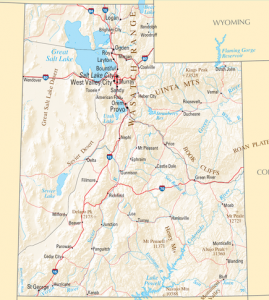Following reports of Highly Pathogenic Avian Influenza (HPAI) H5N8 in wild birds in California, Oregon and Washington, the state of Utah has activated a multi-agency response plan following the confirmation of HPAI bird flu virus in a wild bird in Davis County.

The avian influenza virus strain H5N8 was confirmed by the National Veterinary Services Laboratory in Ames, Iowa in an American widgeon duck, on Jan. 9, 2015. Several other wild birds taken by hunters near the Great Salt Lake in Davis County are also undergoing tests.
There is no immediate public health concern due to the recent detection of the avian influenza virus.
“This discovery of avian influenza in a wild bird is not unexpected, considering that Utah sits in a major migratory bird flight path,” said Dr. Warren Hess, Acting State Veterinarian with the Utah Department of Agriculture and Food. “The possibility of the disease being transmitted to domestic backyard bird flocks remains high, and we advise bird owners to take extra biosecurity measures to protect their flocks.”
The avian influenza strains involved have not been implicated in any human infection to date. The USDA states that all poultry, poultry products and wild birds are safe to eat as long as they are properly handled and cooked to a temperature of 165 degrees Fahrenheit .
The virus has not been found in commercial poultry anywhere in the US.
“We have not diagnosed avian influenza in Utah’s domestic poultry population, but the presence of the virus in migratory waterfowl poses a potential risk to our backyard poultry,” Dr. Hess says. “This event underscores the importance of biosecurity for backyard bird owners. We strongly encourage owners to eliminate any contact between their birds and wild birds. We also want them to monitor their flock closely and report sick birds.”


One thought on “Utah: H5N8 avian influenza confirmed in an American widgeon duck”